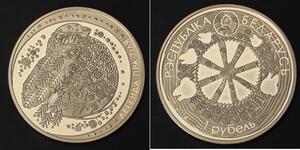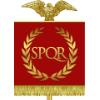1 Fanam India Gold
1790, India, Kingdom of Mysore, Tipu Sultan. Tiny Gold Fanam Coin. 0.39gm!
State: Mysore Mint Place: Pattan. Mint Year: 1790 AD (AH 1218) Reference: Mitchiner 985, KM-128.1. R! Denomination: Gold Fanam (1/10 Pagoda = 288 Copper Cash!) Weight: 0.39gm Material: Gold! Diameter: 7mm
Obverse: Retrograde date (8121 for AH 1218 = 1790 AD) above mint name (“Pattan”).
Reverse: Letter "He" within dotted field.
Tipu Sultan (born Sayyid wal Shareef Sultan Fateh Ali Sahab Tipu, 20 November 1750 – 4 May 1799), also known as the Tiger of Mysore and Tipu Sahib, was a ruler of the Kingdom of Mysore. He was the eldest son of Sultan Haidar Ali of Mysore. Tipu introduced a number of administrative innovations during his rule, including his coinage, a new Mauludi lunisolar calendar, and a new land revenue system which initiated the growth of the Mysore silk industry. Tipu expanded the iron-cased Mysorean rockets and commissioned the military manual Fathul Mujahidin, and is considered a pioneer in the use of rocket artillery; Tipu Sultan deployed the rockets against advances of British forces and their allies during the Anglo-Mysore Wars, including the Battle of Pollilur and Siege of Seringapatam. He also embarked on an ambitious economic development program that established Mysore as a major economic power, with some of the world’s highest real wages and living standards in the late 18th century.
Napoleon, the French commander-in-chief who later became emperor, sought an alliance with Tipu. In alliance with the French in their struggle with the British, and in Mysore’s struggles with other surrounding powers, both Tipu and his father used their French trained army9 against the Marathas, Sira, and rulers of Malabar, Kodagu, Bednore, Carnatic, and Travancore. During Tipu’s childhood, his father rose to take power in Mysore, and upon his father’s death in 1782, Tipu succeeded to a large kingdom bordered by the Krishna River in the north, the Eastern Ghats in the east, and the Arabian Sea in the west. He won important victories against the British in the Second Anglo-Mysore War, and negotiated the 1784 Treaty of Mangalore with them after his father Hyder Ali suddenly died from cancer in December 1782 during the Second Anglo-Mysore War.
Tipu became involved in conflicts with his neighbours, including the Maratha–Mysore War, where Tipu defeated the Maratha Empire. The Marathas later sacked Hindu temples in his kingdom, such as Sringeri Sharada Peetham, which Tipu Sultan rebuilt, and the Marathas formed an alliance with the British. Tipu remained an implacable enemy of the British East India Company, renewing conflict with his attack on British-allied Travancore in 1789. In the Third Anglo-Mysore War, Tipu was forced into the Treaty of Seringapatam, losing a number of previously conquered territories, including Malabar and Mangalore. He sent emissaries to foreign states, including the Ottoman Empire, Afghanistan, and France, in an attempt to rally opposition to the British. In the Fourth Anglo-Mysore War, the forces of the British East India Company, supported by the Marathas and the Nizam of Hyderabad, defeated Tipu, and he was killed on 4 May 1799 while defending his fort of Srirangapatna.
Tipu Sultan’s image in India is complex. As one of the few South Indian kings (along with Hyder Ali and Kerala Varma Pazhassi Raja) to provide stiff resistance to British imperialism, historians of the Indian nationalist tradition have venerated Tipu as a national hero, a secular ruler and freedom fighter who fought against British colonialism, and praised for his technological and military innovations, and economic reforms that substantially improved the incomes and living standards of Mysoreans. But with the rise Hindu-Muslim tensions in recent decades, an alternative Hindu nationalist view sees Tipu as a Muslim tyrant, controversial for suppressing political dissent among Hindus, Christians, and Mappla Muslims. Those of the latter view argue that he forced Manglore Catholics and Nairs of Kerala to convert to Islam, and tortured and killed people who refused to convert, according to British colonial accounts. However, these accounts may be unreliable or fabricated, in that there was a vested interest in presenting a resisting Indian king as tyrants and the British as liberators, just as the Indian nationalist view of Tipu as a secular king is colored by the post-independence necessity of creating idols to Hindu-Muslim unity. Scholarly assessments of his religious policy is that while he was personally a devout Muslim, his rule was largely tolerant to most religious groups except several minority communities (belonging to Hinduism, Christianity and Islam) who helped the British in their struggles against Tipu, He made regular endowments made to Hindus and Hindu institutions including 156 temples, while also punitively destroying some Hindu temples in rebellious regions like Malabar.
(1365 X 604 pixels, file size: ~146K)
Posted by: anonymous 2017-09-02
1790, India, Kingdom of Mysore, Tipu Sultan. Tiny Gold Fanam Coin. 0.39gm! State: Mysore Mint Place: Pattan. Mint Year: 1790 AD (AH 1218) Reference: Mitchiner 985, KM-128.1. R! Denomination: Gold Fanam (1/10 Pagoda = 288 Copper Cash!) Condition: A well struck XF with a nicely ce ...
(1125 X 420 pixels, file size: ~94K)
Posted by: anonymous 2015-12-08
INDIA-MYSORE Circa 1800's 1 Fanam GOLD XF
(1077 X 480 pixels, file size: ~86K)
Posted by: anonymous 2015-10-07
1790, India, Mysore, Tipu Sultan. Tiny Gold Fanam (1/10 Pagoda) Coin. XF-AU! State: Mysore Mint Place: Patan Mint Year: 1790 AD (AH 1218) Condition: A nice lustre XF-AU! Denomination: Gold Fanam (1/10 Pagoda = 288 Copper Cash!) Reference: Friedberg 1353, KM-128.1 var. (here with ...
(349 X 174 pixels, file size: ~87K)
Posted by: anonymous 2015-08-23
A COLLECTION OF THE COINS OF MYSORE Tipu Sultan, Gold Fanam, Calicut, AH 1200, Persian H, rev mint and date, 0.38g (KM 78; H 410). About extremely fine. bought privately, 1973 £20-40
(1125 X 420 pixels, file size: ~105K)
Posted by: anonymous 2014-02-04
INDIA-MYSORE ND Circa 1700's 1 Fanam GOLD XF
|
One of them is




















